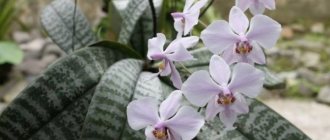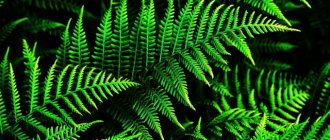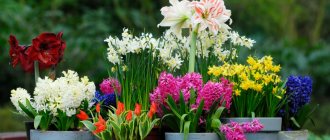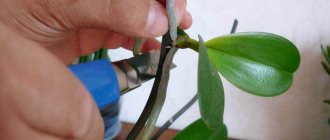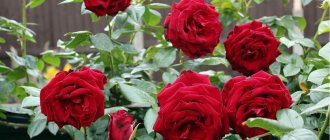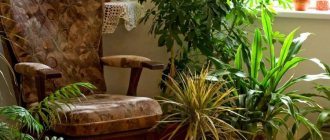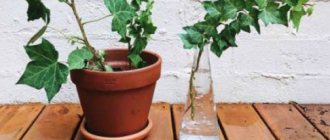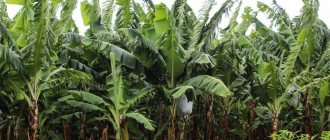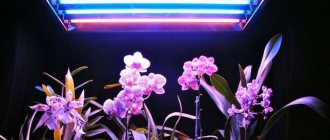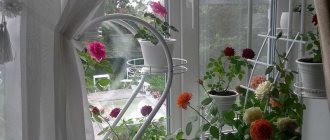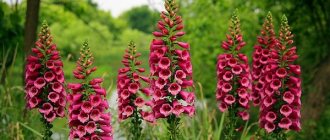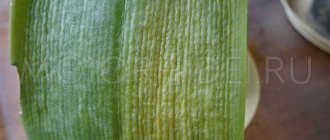Higher plants are divided into herbaceous and woody; accordingly, there are two types of stem structure. A distinctive feature of woody plants is their constant growth in thickness, which stops only when the organism dies. Herbaceous plants are limited in growth due to their life cycle. There are no significant differences in the structure of plant stems.
The stem is the axis of the shoot, with leaves and buds located on it. The structure of the stem can be primary - during the formation of a new plant, when the cells are not yet differentiated (in monocots it remains for life). Dicotyledons and gymnosperms are characterized by rapid changes in the primary stem, as a result of which a secondary stem structure is formed (due to the action of the cambium and phellogen).
Stem
Variety of stems
The stem is the axial part of the plant’s shoot; it conducts nutrients and carries the leaves to the light.
Spare nutrients may be deposited in the stem. Leaves, flowers, fruits with seeds develop on it. The stem has nodes and internodes. A node is a section of the stem that contains a leaf(s) and a bud(s). The area of the stem between adjacent nodes is an internode. The angle formed by the leaf and stem above the node is called the leaf axil. Buds occupying a lateral position on a node, in the leaf axil, are called lateral or axillary. At the top of the stem there is an apical bud.
The stems of woody and herbaceous plants differ in life expectancy. Aboveground shoots of temperate climate grasses live, as a rule, for one year (the lifespan of the shoots is determined by the lifespan of the stem; the leaves can be replaced). In woody plants, the stem exists for many years. The main stem of a tree is called a trunk; in shrubs, individual large stems are called stems.
There are several types of stems.
Many woody and herbaceous plants have erect stems (their shoot growth is usually directed upward, towards the sun). They have a well-developed mechanical tissue; they can be woody (birch, apple tree) or herbaceous (sunflower, corn).
Creeping stems spread along the ground and can take root at nodes (creeping stems, strawberries).
Climbing and climbing stems, combined into a group of vines, are widespread. Among the vines there are woody and herbaceous ones. Due to the insufficient development of reinforcing elements due to the rapid growth, they need supports. Climbing shoots spirally wrap their stems around the support, and in some plants the spiral turns are directed clockwise, while in others they are counterclockwise. There are also neutral plants, the stems of which curl both to the right and to the left.
Climbing stems, rising upward, wrap around the support (field bindweed, hops).
The clinging stems rise upward, clinging to the support with tendrils (mouse peas, grapes).
Types of stem growth
There are plants with erect stems - they grow perpendicular to the soil (sunflower, birch);
Creeping - spreading along the ground, taking root in nodes (strawberries);
Climbing – also spreading along the substrate, but not rooting in nodes (hops);
Climbing , having antennae (you can recall the film “Jack and the Beanstalk” and the characteristic appearance of the stem of a bean plant, which, branching, reached the heavens);
Shortened by dandelion and plantain.
Variety of stems
The stem shape is:
- cylindrical;
- triangular;
- multifaceted;
- flattened.
Shapes of stems
If we cut the stem crosswise, we will see that in the cross section the stem is most often round in outline, with a smooth or ribbed edge.
But it can also be different: triangular (in sedge), tetrahedral (in nettle), multifaceted (in many cacti), flattened or flat (in prickly pear), winged (in sweet pea). Wide, flat, heavily furrowed stems often represent abnormal tissue proliferation. In cereals, the stem (aerial part) is called a culm. It is usually hollow in the middle (except for the nodes). Hollow stems are common in the families Apiaceae, Cucurbitaceae, and others.
Internal structure of the stem
Young (annual) stems are covered on the outside with a skin, which is then replaced by a plug consisting of dead cells filled with air. The skin and cork are integumentary tissues.
Cork is a multilayer covering fabric. It appears already in the first year of life of the shoot. With age, the thickness of the cork layer increases. The cork cells are dead, filled with air, tightly adjacent to each other. Reliably protects the internal tissues of the stem from unfavorable conditions.
The skin and cork protect the deeper cells of the stem from excessive evaporation, various damage, and from the penetration of atmospheric dust with microorganisms that cause plant diseases.
The skin of the stem contains stomata through which gas exchange occurs. Lentils develop in the cork - small tubercles with holes. Lentils are formed by large cells of the main tissue with large intercellular spaces.
Bark - under the integumentary tissue there is bark, the inner part of which is represented by phloem. The bast composition, in addition to sieve tubes and companion cells, includes cells in which reserve substances are deposited.
Bast fibers, elongated cells with destroyed contents and lignified walls, represent the mechanical tissue of the stem. They give the stem strength and increase resistance to fracture.
Sieve tubes are a vertical row of elongated living cells, the transverse walls of which are pierced with holes, the nuclei in these cells have collapsed, and the cytoplasm is adjacent to the membrane. This is a conductive bast tissue through which solutions of organic substances move.
Cambium is a long narrow cell of educational tissue with thin membranes. In spring and summer, cambium cells actively divide and the stem grows in thickness.
The dense, widest layer - wood - is the main part of the stem. Like bast, it consists of different cells of different shapes and sizes: vessels of conductive tissue, wood fibers of mechanical tissue and cells of the main tissue.
All layers of wood cells formed in spring, summer and autumn make up the annual growth ring.
The core - the cells are large, thin-walled, loosely adjacent to each other and perform a storage function.
Core rays pass from the core in a radial direction through the wood and bast. They consist of cells of the main tissue and perform storage and conducting functions.
| Skin | Young (annual) stems are covered on the outside with a skin, which is then replaced by a plug consisting of dead cells filled with air. The skin and cork are integumentary tissues. |
| Stoma | The skin of the stem contains stomata through which gas exchange occurs. Lentils develop in the cork - small tubercles with holes. Lentils are formed by large cells of the main tissue with large intercellular spaces. |
| Cork | Multilayer cover fabric. It appears already in the first year of life of the shoot. With age, the thickness of the cork layer increases. The cork cells are dead, filled with air, tightly adjacent to each other. Reliably protects the internal tissues of the stem from unfavorable conditions. |
| Bark | Under the covering tissue there is a bark, the inner part of which is represented by phloem. The bast composition, in addition to sieve tubes and companion cells, includes cells in which reserve substances are deposited. |
| Cambium | Narrow long cells of educational tissue with thin membranes. In spring and summer, cambium cells actively divide - the stem grows in thickness. |
| Core | Central part of the stem. The cells are large, thin-walled, loosely adjacent to each other and perform a storage function. |
| Core rays | Core rays pass from the core in a radial direction through the wood and bast. They consist of cells of the main tissue and perform storage and conducting functions. |
What is the significance of the skin and the cork?
The skin and cork perform protective and reserve functions, protecting deeply distributed cells from excessive evaporation, defects, access to organic dust and microbes that can cause various plant diseases.
Under the influence of these tissues, liquid and gases are absorbed and released. After dying, the cells are filled with air and tanning substances, carrying out their activities.
General features of the anatomical structure of the stem
The anatomical structure of the stem corresponds to its main functions: conductive - the stem has a well-developed system of conductive tissues that connects all the organs of the plant;
supporting - with the help of mechanical tissues, the stem supports all above-ground organs and brings the leaf to favorable lighting conditions; growth - in the stem there is a system of meristems that support the growth of tissues in length and thickness (apical, lateral, intercalary). The apical meristem gives rise to the primary lateral meristem - the procambium - and intercalary meristems. As a result of the activity of primary meristems, the primary structure of the stem is formed. It can persist in some plants for a long time. The secondary meristem - the cambium - forms the secondary state of the stem structure.
Primary structure. In the stem there is a central cylinder (stele) and a primary cortex.
The primary cortex is covered on the outside with epidermis (integumentary tissue), under which there is chlorenchyma (assimilation tissue). It can form alternating stripes stretching along the stem with mechanical tissues (collenchyma and sclerenchyma).
The central cylinder is surrounded by a layer of endoderm. The main part of the central cylinder is occupied by conducting tissues (phloem and xylem), which together with mechanical tissue (sclerenchyma) form vascular-fibrous bundles. Inside the conducting tissues there is a core consisting of unspecialized parenchyma. Often an air cavity forms in the core.
Secondary structure - the cambium forms secondary xylem inward, and secondary phloem outward. The primary bark dies off and is replaced by a secondary bark - this is the collection of all the secondary tissues located outside the cambium.
The structure of the stem depends on living conditions and reflects the structural features of a particular systematic group of plants.
general description
This type of stem is found in shrubs and trees. It is very hard and dark in color. This happens thanks to a special substance lignin, which is deposited in it.
A distinctive feature of such a stem is perenniality . During the first year of life, the plant develops one layer of bark; subsequently, it is regularly covered with new ones, forming annual rings. If you count them, you can find out how old the tree is. In addition, they are used to calculate in what environment the plant grew in a certain year. This can be recognized by the thickness of its rings. If they are thin, it means that the year was dry and there was little moisture. When the ring is wider, this indicates good development of the plant during this period.
The woody stem is called the trunk.
Internal structure of the stem (part of a cross section of the stem of a three-year-old linden shoot)
Periderm. The primary integumentary tissue (epidermis) does not function for long. Instead, a secondary integumentary tissue is formed - periderm, which consists of three layers of cells - cork (outer layer), cork cambium (middle layer) and phelloderm (inner layer). To carry out exchange with the environment, there are lentils on the periderm.
The primary cortex consists of two layers: collenchyma (the layer under the periderm) - mechanical tissue - and the parenchyma of the primary cortex (can perform a storage function).
Secondary bark (or phloem). Typical structure of bast: sieve tubes, satellite cells, bast parenchyma and bast fibers. The bast fibers form a layer called hard bast; all other elements form a soft bast.
Cambium is an educational tissue. Due to the division and differentiation of its cells, bast cells (secondary bark) are formed on the outside, and wood cells are formed on the inside. As a rule, much more wood cells are formed than bark cells (ratio 4:1). The growth of the stem in thickness occurs due to the activity of cambium cells. The activity of the cambium stops in winter and resumes in spring.
Wood (xylem) is the main part of the stem. It is formed due to the activity of the cambium on its inner side. Consists of vessels (tracheas), tracheids, wood parenchyma, wood fibers (mechanical tissue). One ring of wood is formed per year. The boundary between the annual rings is clearly visible, because spring wood, which was formed after the awakening of cambium activity, consists of large thin-walled cells, while autumn wood consists of smaller, thicker-walled cells. The transition from spring wood to autumn wood is gradual, from autumn to spring wood is always sudden (this is where the boundary between the tree rings is formed). The age of the plant can be determined by the growth rings of the wood. In tropical plants that grow continuously throughout the year, the growth rings are completely invisible.
The pith is the central part of the stem. Its outer layer (perimedullary zone) consists of living parenchyma cells, the central layer - of large cells, often dead. There may be intercellular spaces between the core cells. In the living cells of the core, reserve nutrients are deposited.
The pith ray is a series of parenchyma cells that arise from the pith and extend radially through the wood and phloem in the primary bark. Their function is conductive and storage.
Test on the topic: “Stem”
Time limit: 0
Navigation (job numbers only)
0 out of 15 tasks completed
Questions:
- 1
- 2
- 3
- 4
- 5
- 6
- 7
- 8
- 9
- 10
- 11
- 12
- 13
- 14
- 15
Information
The verification test task includes questions with one or more correct answers.
You have already taken the test before. You can't start it again.
The test is loading...
You must log in or register in order to begin the test.
You must complete the following tests to start this one:
results
Correct answers: 0 out of 15
Your time:
Time is over
You scored 0 out of 0 points (0)
| Average result |
| Your result |
Categories
- No category 0%
maximum of 20 points
| Place | Name | Recorded | Points | Result |
| Table is loading | ||||
| No data | ||||
Your result has been recorded in the leaderboard Loading
- 1
- 2
- 3
- 4
- 5
- 6
- 7
- 8
- 9
- 10
- 11
- 12
- 13
- 14
- 15
- With answer
- With a viewing mark
- Task 1 of 15
1.
Frame, the central support of a plant, connecting its underground and aboveground parts
Right
Wrong
- Task 2 of 15
2.
Thanks to the apical bud
Right
Wrong
- Task 3 of 15
3.
Form a crown
Right
Wrong
- Task 4 of 15
4.
Consists of skin, cork and bast
Right
Wrong
- Task 5 of 15
5.
Consists of dead cells, with thick membranes filled with air
Right
Wrong
- Task 6 of 15
6.
Young shoots are covered on the outside
Right
Wrong
- Task 7 of 15
7.
Responsible for the formation of annual rings (growth of the stem in thickness)
Right
Wrong
- Task 8 of 15
8.
Growth of wood per year in thickness
Right
Wrong
- Task 9 of 15
9.
Occupies most of the shoot, consists of vessels, fibers and living cells
Right
Wrong
- Task 10 of 15
10.
The central part of the stem that stores nutrients
Right
Wrong
- Task 11 of 15
11.
The conducting system of the stem consists of
Right
Wrong
- Task 12 of 15
12.
Transports liquid from roots to leaves (updraft)
Right
Wrong
- Task 13 of 15
13.
Delivers nutrients produced in the leaves to the roots and other parts of the plant (downward flow)
Right
Wrong
- Task 14 of 15
14.
Main functions of the stem
Right
Wrong
- Task 15 of 15
Conditions affecting tree growth in thickness
By the thickness of the growth rings you can find out in what conditions the tree grew in different years of its life. Narrow growth rings indicate a lack of moisture, shading of the tree and poor nutrition.
The tree ring is the growth of wood per year. In the inner zone of this ring, closer to the core, the vessels are larger and there are more of them. This is early wood. In the outer zone of the ring, closer to the cortex, the cells are smaller and thicker-walled. This is latewood. In winter, cambium cells do not divide; they are in a state of rest. In spring, with the budding of the buds, the activity of the cambium resumes. New wood cells appear and, consequently, a new growth ring is formed. The large-celled wood (early) appears next to the small-celled (late) wood of the previous year. Thanks to this proximity, the border with annual wood growth becomes clearly visible.
What is a trunk?
There are several life forms of plants: grasses, shrubs and trees. The latter are distinguished by the presence of one well-developed stem. Intensive division of cells of the lateral educational tissue - cambium - leads to a thickening of the shoot axis and the formation of a trunk.
Cambium cells divide annually, forming a layer of a certain thickness - annual rings. By their number you can determine the age of the plant.
Movement of nutrients along the stem
For normal plant life, water and nutrients must be supplied to all organs. One of the most important functions of the stem is transport. It consists in the transfer of solutions from soil nutrition organs - roots and air nutrition organs - leaves to all organs of the plant. This can be easily verified by making longitudinal and transverse sections of the plant stem as shown in the figure.
The entire plant is permeated with conductive tissues. Some conducting tissues carry water with minerals dissolved in it, while others carry a solution of organic substances. Conductive tissues are combined into vascular-fibrous bundles, often surrounded by strong fibers of mechanical tissue.
Vascular-fibrous bundles run along the entire stem, connecting the root system with the leaves. But to be completely convinced of this, it is advisable to perform the following experiment.
Target:
make sure that vascular-fibrous bundles connect the root system to the leaves.
What we do:
Place a sprig of the plant in colored water for a while. In the experiment it will replace minerals. After 2-3 hours, make a transverse and longitudinal incision.
What we see:
changed its color and the wood turned red. The bark and pith remained unpainted.
Result:
solutions of mineral substances, like colored water, rise from the root inside the stem through the vessels of the wood. The vessels pass through the stem, branch into the leaves and branch there. Through these vessels, water with minerals dissolved in it enters the leaves. This is clearly visible in the longitudinal and transverse sections of the stem.
Root pressure and evaporation of water by leaves are of great importance for raising water into the stem. In place of the evaporated water, new water constantly enters the leaves.
The best
The photo below shows the stem of the largest tree in the world - the sequoia. The trunk of this representative of the plant world can reach a height of more than 80 m.
Sequoia General Sherman is also a long-liver. Presumably its age is about 2500 years.
The trunk of the baobab tree stores the most water. This tree is also the largest in the world in terms of trunk girth. But the orchid stem has a length of 0.5 mm, being the smallest.
Movement of organic substances along the stem
Organic substances are deposited in special storage tissues, some of which accumulate these substances inside cells, others - inside cells and in their membranes. Substances that are stored in reserve: sugars, starch, inulin, amino acids, proteins, oils.
Organic substances can accumulate in a dissolved state (in beet roots, onion scales), solid (starch grains, protein - potato tubers, cereal grains, legumes) or semi-liquid state (oil drops in the endosperm of castor beans). Especially a lot of organic matter is deposited in modified underground shoots (rhizomes, tubers, bulbs), as well as in seeds and fruits. In the stem, organic substances can be deposited in the parenchyma cells of the primary cortex, medullary rays, and living medullary cells.
We know that the starch formed in the leaves is then converted into sugar and enters all organs of the plant.
Target:
find out how sugar from the leaves penetrates the stem?
What we do:
Carefully make a circular cut on the stem of a houseplant (dracaena, ficus). Remove the ring of bark from the surface of the stem and expose the wood. We will attach a glass cylinder with water to the stem (see picture).
What we see:
after a few weeks, a thickening appears on the branch, above the ring, in the form of an influx. Adventitious roots begin to develop on it.
Result:
we know that there are sieve tubes in the phloem, and since we cut them by ringing the branch, the organic substances flowing from the leaves reached the ring cutting and accumulated there.
Soon, adventitious roots begin to develop from the influx.
Conclusion:
Thus, experience proves that organic substances move through the phloem.
Stem and leaf
Let's start with the flower.
The easiest way to deal with the peduncle
- the stem on which the flower grows.
Well, of course, it’s just a stem, a peaceful, modest and decent stem, almost no different from the most ordinary stems on which the most ordinary leaves grow. The receptacle
—the extension that ends the peduncle—is also a stem, just expanded in breadth.
With the sepals and petals, everything is also simple - it is clear that these are just slightly changed leaves.
If you very carefully and scrupulously examine the stamen filament on which the anther with pollen is attached, you will find that this is also a leaf, just very thin and unlike itself.
But that is not all. Let's look at the pistil of a flower, which will one day give rise to the fruit of a plant. At first glance, it is not at all clear what it came from: it usually looks like a bottle with a thick base and a thin neck, slightly widened at the top. One could imagine it as a modified stem, but, looking closely, we will note this theory: the pistil of many plants consists, as it were, of parts fused together in a circle, but for a stem this is completely, completely uncharacteristic. But looking closely at these very fused parts, we will discover an amazing thing. It turns out that each such part is nothing more than a leaf, only changed to such an extent that it is completely impossible to recognize it at first glance. That is, the pistil is also formed by leaves, only usually fused in a circle. These “pistillate” leaves are called carpels.
.
Rice. 2.
Almost the entire flower is just a stem and leaves
And it is no coincidence that they are called carpels, because they are directly related to the fruit. Let's, having dealt with the flower, take a close look at the fruit.
Let's start with the simplest fruit - leaflets. You could see such a fruit, for example, in a peony. Having carefully examined (or better yet, experimentally picked into pieces) this fruit, we will find that it is a leaf fused at the edges, and seeds are attached to the edges. When ripe, the leaflet cracks at the seam, unfolds into a regular leaf, and the seeds spill out.
Rice. 3.
Leaflet - peony fruit
In other words, this is the picture. The pistil of a flower, from which a leaflet will develop after fertilization, is formed by one carpel, inside of which there are several ovules. After fertilization, seeds develop in the ovules of this pistil, and the carpel itself grows into a rolled leaf, to the edges of which the seeds are attached.
Now let's look at a slightly more complex fruit - for example, the pea bean (which is often incorrectly called a pod). Now we, experienced in studying the leaflet, will quickly understand that the bean is formed by leaves - there are two of these leaves, they are fused at the edges and form the flaps of the bean.
Rice. 4.
Bob - pea fruit
In the case of leaflet and bean, the leaves are easy to recognize. Let's now look at another famous fruit - the plum. Where is the leaf in it? And where did the juicy, fleshy part that surrounds the seed, the seed, come from?
And here a revelation awaits us. Having carefully looked at this edible juicy part, we will find that it is also a leaf, only unlike itself - it has grown in thickness, fused with edges and changed color. The furrow that runs along the plum fruit is a seam from fusion.
Rice. 5.
Plum
Exactly the same principle applies to the fruits of other drupes - cherries, peaches, apricots, and so on. Nuts, for example the hazelnut fruit, are structured in the same way: the seed (kernel of the nut) is surrounded by a single carpel, although this carpel is not juicy, but dry and hard - this is the nut shell. By the way, on this shell you can also see a seam - a groove along which the carpel has grown together.
Let's not stop there - let's look at other fruits, for example, a tomato. Let's try to find carpels in it too. Now that we are already experienced in this matter, it will not be difficult for us to see that a tomato is several (two or more) succulent carpels fused in a circle, to the inner surface of which seeds are attached.
Rice. 6.
Tomato
The same story is with the cucumber - the carpels in this fruit are so recognizable that you can even find the central vein characteristic of the leaf in them.
Organic deposition
Water and mineral salts absorbed by the roots move along the stem to the leaves, flowers and fruits. This is an upward current, it is carried out through wood, the main conducting element of which is vessels (dead empty tubes formed from living parenchyma cells) and tracheids (dead cells that are connected to each other using bordered pores).
Organic substances formed in the leaves flow into all organs of the plant. This is a downward current, it is carried out through the bast, the main conducting element of which is sieve tubes (living cells connected to each other by strainers - thin partitions with holes, they can be in the transverse and longitudinal walls).
In woody plants, the movement of nutrients in the horizontal plane is carried out using heart-shaped rays.
The importance of storage tissue lies not only in the fact that the plant, if necessary, feeds on these organic substances, but also in the fact that the latter are a food product for humans and animals, and can also be used as raw materials.
What function does the lube perform?
Bast (phloem) is formed by bast fibers and phloem parenchyma, which contribute to the strength and plasticity of the stem, and sieve-shaped vessels that are designed to transport glucose and chemical compounds.
Since the phloem is a conductor of chemical compounds into the leaves and other organs, it performs the function of a lowering current.
